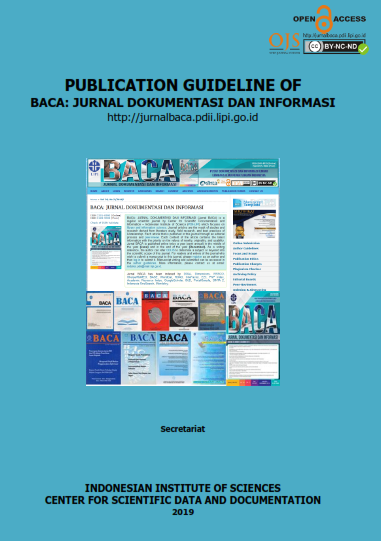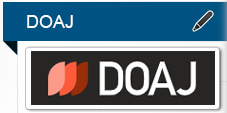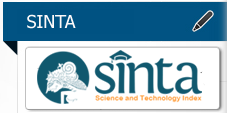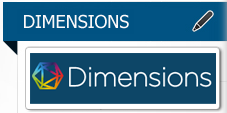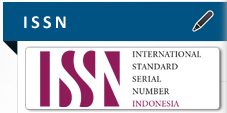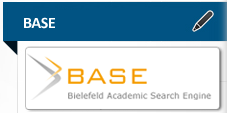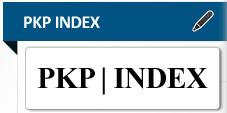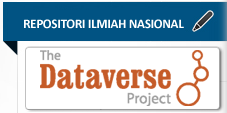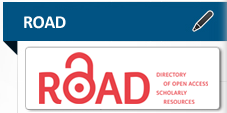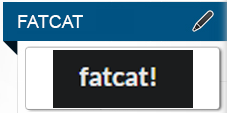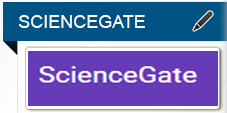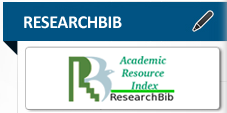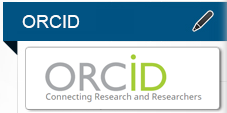SURVEI PENGGUNAAN MEDIA SOSIAL DI KALANGAN MAHASISWA KOTA PADANG MENGGUNAKAN TEORI USES AND GRATIFICATIONS
Abstract
This research utilized theory uses and gratifications for discussing students’ behavior in taking advantages of social media. Respondents came from 3 public universities in the city of Padang. The data collection method was done by distributing questionnaires and interviews, then, the data analyzed statistically. The results concluded that 97% of students claimed as social media active users. Based on the type of the application, the messenger/ chat app. was more preferable then the social networks. WhatsApp is the most application used. As many as 96% of respondents claimed using it. Whereas Facebook, the most preferable application uses throughout the world, is only used by 36% of respondents. A large number of WhatsApp users is in line with their goals and benefits use this content. The majority (87%) of respondents use social media as a tool of communication, in addition to information retrieval, and social interaction.
Keywords
Full Text:
PDFReferences
Aji, Dewi Pratiwi Putri. 2014. “Penggunaan Media Sosial dalam Pemenangan Joko Widodo-Basuki Tjahaha Purnama pada Pilkada DKI Jakarta 2012 (Studi Atas Marketing Politik di Facebook dan Twitter)”. Di http://repository.uinjkt.ac.id/dspace/handle/123456789/24214 (akses 17 Januari 2019).
Asosiasi Pengguna Jasa Internet Indonesia/APJII. 2018. “Data Statistik Pengguna Internet Indonesia 2018”.
Babrow, Austin S. 1987. Student Motives for Watching Soap Operas. Journal of Broadcasting & Electronic Media 31 (3): 309–21. https://doi.org/10.1080/08838158709386666.
Bantz, Charles R. 1982. Exploring Uses and Gratifications: A Comparison of Reported Uses of Television and Reported Uses of Favorite Program Type. Communication Research 9 (3): 352–79. https://doi.org/10.1177/009365082009003002.
Blumler, Jay G. 1979. The Role of Theory in Uses and Gratifications Studies. Communication Research 6 (1): 9–36. https://doi.org/10.1177/009365027900600102.
Coursaris, Constantinos, Wietske Van Osch, Jieun Sung, & Younghwa Yun. 2013. Disentangling Twitter’s Adoption and Use (Dis) Continuance: A Theoretical and Empirical Amalgamation of Uses and Gratifications and Diffusion of Innovations. AIS Transactions on Human-Computer Interaction 5 (1): 57–83.
Dolan, Rebecca, Jodie Conduit, John Fahy, & Steve Goodman. 2016. Social Media Engagement Behaviour: A Uses and Gratifications Perspective. Journal of Strategic Marketing 24 (3–4): 261–77. https://doi.org/10.1080/0965254X.2015.1095222.
Drestya, Dyane Aulia. 2013. Motif Menggunakan Sosial Media Path pada Mahasiswa di Surabaya. Jurnal Commmonline Departemen Komunikasi 3(3): 530–536.
Elliott, William R., & William L. Rosenberg. 1987. The 1985 Philadelphia Newspaper Strike: A Uses and Gratifications Study. Journalism Quarterly 64 (4): 679–87. https://doi.org/10.1177/107769908706400401.
Gan, Chunmei, & Hongxiu Li. 2018. Understanding the Effects of Gratifications on the Continuance Intention to Use WeChat in China: A Perspective on Uses and Gratifications. Computers in Human Behavior 78 (January): 306–15. https://doi.org/10.1016/j.chb.2017.10.003.
Kent, Michael L. 2013. Using Social Media Dialogically: Public Relations Role in Reviving Democracy. Public Relations Review 39 (4): 337–45. https://doi.org/10.1016/j.pubrev.2013.07.024.
Krause, Amanda E., Adrian C. North, & Brody Heritage. 2014. The Uses and Gratifications of Using Facebook Music Listening Applications. Computers in Human Behavior 39 (October): 71–77. https://doi.org/10.1016/j.chb.2014.07.001.
Parker, S.P. 2003. McGraw-Hill Dictionary of Scientific and Technical Terms. McGraw-Hill Dictionary of Scientific and Technical Terms. McGraw-Hill Education. Di https://books.google.co.id/books?id=xOPzO5HVFfEC (akses 17 Januari 2019).
Reuben, Rachel. 2008. The Use of Social Media in Higher Education for Marketing and Communications: A Guide for Professionals in Higher Education. Rachel Reuben Consulting, LLC (blog). August 19. Di https://rachelreuben.com/2008/08/19/social-media-uses-higher-education-marketing-communication/ (akses 17 Januari 2019).
Saravanakumar, M., & T. Sugantha Lakshmi. 2012. Social Media Marketing. Life Science Journal 9 (4): 4444–4451.
Severin, W. J., & J.W. Tankard, Jr. 2009. Teori Komunikasi, Sejarah, Metode,
dan Terapan di Dalam Media Massa, 5th ed. Jakarta: Kencana.
Solis, Brian. 2008. Customer Service: The Art of Listening and Engagement Through Social Media.
Wang, Weijun, & Chunmei Gan. 2015. Uses and Gratifications of Social Media: A Comparison of Microblog and WeChat. Journal of Systems and Information Technology 17 (4): 351–63. https://doi.org/10.1108/JSIT-06-2015-0052.
We are Social. 2017. "Digital in 2017: Global Overview”. Di https://wearesocial.com/special-reports/digital-in-2017-global-overview (akses 17 Januari 2019).
We are Social. 2018. “Digital in 2018: Global Overview”. Di https://wearesocial.com/special-reports/digital-in-2017-global-overview (akses 17 Januari 2019).
Weaver Lariscy, Ruthann, Spencer F. Tinkham, & Kaye D. Sweetser. 2011. Kids These Days: Examining Differences in Political Uses and Gratifications, Internet Political Participation, Political Information Efficacy, and Cynicism on the Basis of Age. American Behavioral Scientist 55 (6): 749–64. https://doi.org/10.1177/0002764211398091.
Whiting, Anita & David Williams. 2013. Why People Use Social Media: A Uses and Gratifications Approach. Qualitative Market Research: An International Journal 16 (4): 362–69. https://doi.org/10.1108/QMR-06-2013-0041.
DOI: https://doi.org/10.14203/j.baca.v40i2.476
Copyright (c) 2019 BACA: JURNAL DOKUMENTASI DAN INFORMASI

This work is licensed under a Creative Commons Attribution-NonCommercial-NoDerivatives 4.0 International License.











